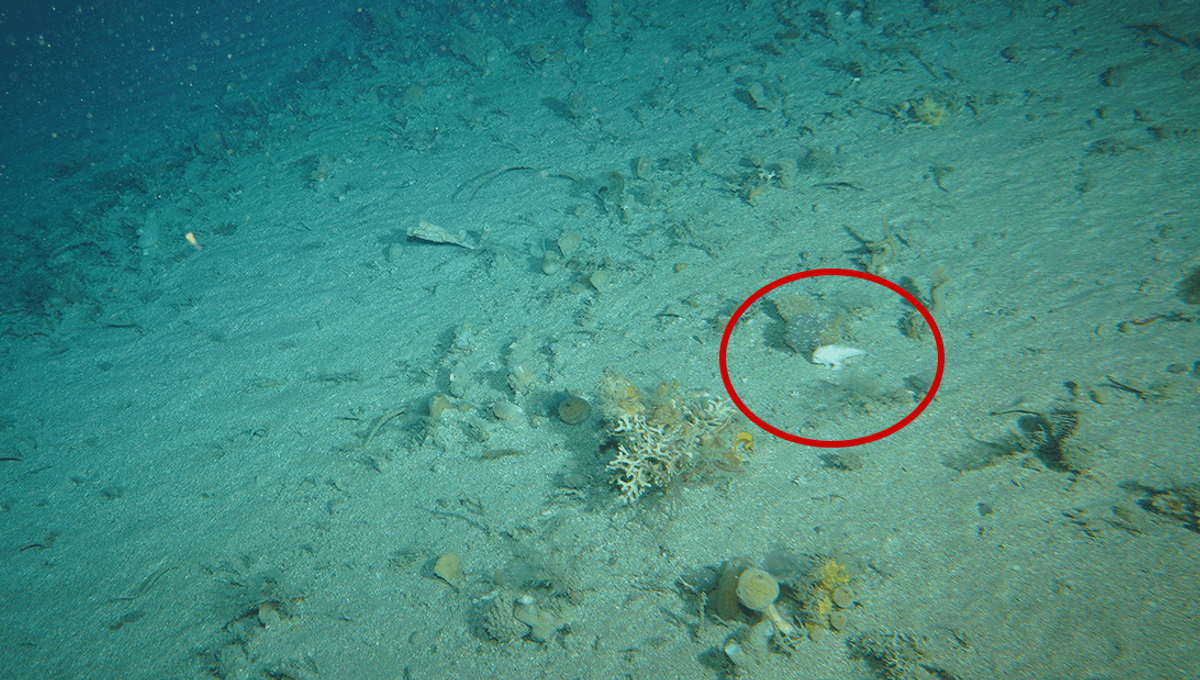The CSIRO-led South-East Australia Marine Ecosystem Survey (SEA-MES) research vessel (RV) Investigator embarked on an exciting mission to investigate the impact of climate change on marine parks and fisheries. Equipped with a remarkable deep tow camera system, the RV Investigator made an astonishing discovery at a depth of 292 meters (958 feet) off the northeast of Flinders Island in Tasmania in July.
Hidden in the depths, the elusive narrowbody handfish (Pezichthys compressus) made a rare appearance. This extraordinary creature was first encountered in 1986 but has not been spotted in the wild since 1996. However, the scientists aboard the RV Investigator couldn’t definitively identify the species they observed.
“We suspect it’s a narrowbody handfish… This is as close as we can get without seeing others or collecting a sample fish,” explained research technician Carlie Devine in a statement. “We can’t be 100 percent sure which handfish species it is.”
The handfish they encountered was significantly larger than the two specimens previously recorded in the Australian National Fish Collection. Furthermore, it was found approximately 100 kilometers (621 miles) away from the last known location of this species.

“I was pretty excited to find the handfish. I know that this is a rare and special fish. And that the chances of seeing one in this environment and capturing it on the deep tow camera are very rare. It’s an important discovery,” expressed Dr. Candice Untiedt, a marine ecologist who was part of the RV Investigator team and identified the handfish.
Handfish are not only intriguing due to their elusive nature but also because of their unique method of movement. These fascinating creatures “walk” along the seafloor using their fins. Tasmania and the Bass Strait are home to seven out of the 14 known handfish species, including the remarkable spotted handfish, which received recognition at Ocean Art 2022 by winning first prize.








